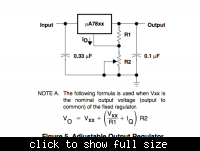scofmb
Newbie level 6
Hello!
I was wondering if i can add a germanium diode to a power supply on a devboard i have..i need to increase the voltage on the devboard by 0,3 since i'm getting undervoltage messages all the time from a SIM900 IC.
The sim900 datasheet say it could take a current over 1.5A, so i have to take that into account too.
The current power supply sch are

I wonder if something like this would work

Would it work? I didn't design this devboard so i found about this problem after i got it.
Thanks in advance
I was wondering if i can add a germanium diode to a power supply on a devboard i have..i need to increase the voltage on the devboard by 0,3 since i'm getting undervoltage messages all the time from a SIM900 IC.
The sim900 datasheet say it could take a current over 1.5A, so i have to take that into account too.
The current power supply sch are

I wonder if something like this would work

Would it work? I didn't design this devboard so i found about this problem after i got it.
Thanks in advance
